Correct leg press in the simulator. Leg press in the simulator, rules for performing the exercise and working muscles. Leg press. What, why and why
There is probably no person who goes to the gym, but is not familiar with the leg press in the machine.
It is performed by women and men, girls and boys - it is a universal, favorite exercise for working the muscles of the legs and buttocks; many replace it with a squat.
But is the leg press on a machine really that effective? Will you get the promised effect or is this a dummy exercise machine?
In this article, we will analyze this movement from all “sides”, which muscles work in the bench press, consider the nuances of the technique for women, sitting, standing, how to place your legs correctly when doing a bench press, and what influences the placement of the legs!
What is this
Leg press(or platform press on a machine) – i.e. multi-joint (hip, knee and ankle joints are involved) exercise for the leg muscles in the simulator at an angle of 45 degrees, which consists of bending and then extending the legs.
As a rule, big, pumped up guys treat this exercise on a machine with “coldness”, assuring that the squat is a much more important exercise for mass growth. Well, let's find out!
How much does the exercise platform weigh?

This is an interesting but difficult question, because... Manufacturers do not indicate the empty weight of the bench press, and it is not standardized. Let's give examples: the weight of the platform of the BT-202 simulator is 60 kg, in some gyms trainers talk about 25-30 kg.
However, do not rush to rejoice and add these 60 kilos to your working weight. The fact is that the load in simulators in which the movement is performed at an angle to the base (in this case it is 45 degrees) will be calculated as follows: the sine of this angle, i.e. 0.7, multiplied by the weight of the platform - i.e. from 60 kg. you will get a load of 42 kg, from 30 - 21.
What muscles work?
The platform press can be performed in three positions, which will differ in the angle of inclination and, accordingly, in the targeted muscles. What does each of them download?
In a classic simulator at an angle of 45 degrees

This is the good old incline leg press (or, as they also say, incline), with a 98% probability this is exactly what you should do in your gym. It is easy to use, versatile and extremely popular among gym goers.
There won’t be much of a surprise here, but we will additionally note which muscles do not work in this machine: this is where the special benefit of the platform press lies. So, the exercise is designed to strengthen:
on the anterior biceps of the thigh,
inner and back thighs,
gluteal muscles.
In addition, we would like to add that the leg press involves the hip, knee and ankle joints.
In vertical
 Outdoor leg press machine
Outdoor leg press machine In addition to the classic angled leg press, there is also a vertical horizontal platform bench press. This is a not very well known variation that is extremely rare to find in the gym. With a vertical leg press, the platform is perpendicular to your body. The movement is carried out in a short amplitude.
This allows you to isolate the load on the lower part of the quadriceps (teardrop muscle), which will make the leg bulkier in the lower thigh, closer to the knee.
If you need just such a load, then you can perform this exercise in a Smith machine; for normal execution, you only need the help of an experienced partner who will open and close the safety mechanisms.
Sitting

Or horizontal leg press. A more common option than the previous one, but not as much as the classic one. The exercise is also a basic one; the main movement in it is the push. It is usually used to work the muscles of the anterior thigh.
So, what muscles are involved:
main– quadriceps (quadriceps femoris muscle),
synergists– gluteus maximus, adductor magnus, soleus,
dynamic stabilizers- thigh biceps, calf.
Efficiency
Simple, clear technique. Everything is extremely transparent and understandable. In terms of technique, this exercise is much simpler than squats with a barbell; of course, in terms of effectiveness it lags behind them, but not by much. It is always easier for beginners to learn how to do a leg press than to learn how to squat correctly.
Great variability. There are several variations of the leg press, in which, with different leg positions, the emphasis shifts to different muscle groups.
Improved blood flow. When performing a leg press, blood circulation in the pelvic organs increases, which leads to the production of testosterone, which is necessary for muscle growth and improved blood flow to the female organ (and as a nice bonus, it also stimulates libido 😉).
Getting out of the training plateau. By engaging the ankle, knee, and hip joints in one economical movement, you will be able to take on new weight that is not available to you while squatting, and thereby give impetus to strength gains.
In addition, the body needs an emotional slap in the face, which helps establish a connection.
Concentrated work on the leg muscles. By performing the leg press, the quadriceps and hamstrings receive a concentrated, targeted load. This is achieved due to the efficiency and ease of movement (flexion-extension) and turning off the stabilizer muscles.
Which is better: barbell squats or bench presses?

We answer the most popular question: what to choose, squat or leg press? What will be more effective for working out muscles and growing muscle mass? Which option is suitable for a herniated lumbar spine?
For muscle growth
In general, doing squats correctly with a significant weight for you is much more difficult than doing a leg press. The greater the weight, the more precise the movement mechanics must be. Everything here plays a vital role, from foot placement and proper weight distribution to the position of the shoulder blades.
So it will be easier to “play” with the leg press and put more stress on the muscles: you can do drop sets, fixed negative reps (all this will be discussed below) and not be particularly afraid of injuries - with the squat it’s much more difficult to do all this.
Let's be honest, there are no normal studies on the topic of what grows muscles better, so it seems to us that these 2 exercises are found on the same level, with the only difference being that barbell squats are much more technically complex and involve more muscles.
On the ass
Definitely, squats have a better effect. The explanation will be 2 paragraphs below!
For problems with the spine
There is an opinion that squats can be replaced with a platform press. Many modern trainers give this advice to people with various spinal problems as an alternative to squats due to the fact that the load on the lumbar spine is reduced.
Let's start with what it is two completely different exercises. If a person really has some problems with the spine, but he still wants to pump up his legs, then yes, for a while we can replace the squat with a platform press. But first of all, it is still necessary to understand exactly what problems we are talking about.
Attention: our article is not a reason for action or inaction. First of all, your attending physician should explain to you what kind of exercise is contraindicated for you.
When doing a leg press, the load is more targeted on the hip joint, on the area of the sacrum, pelvic bones, and knee joints. We do not stand while performing this exercise, and Stabilizing muscles are not involved in maintaining tone A. Therefore, sometimes the situation can worsen from leg presses, because... engaging the trunk muscles helps strengthen the tone of the lower extremities, thereby minimizing injuries.
The minimum load on the spine is in a lying position. In a standing position - the usual load, natural. AND the greatest load on the spine occurs in a sitting position. As doctors say, standing is healthier than sitting, but lying down is healthier than standing.

When performing standing exercises, many muscles are involved, including the iliopsoas muscles, quadratus lumborum muscles, gluteal muscles, etc. All these muscles help keep the spine in good shape..
When we sit on the exercise machine, we practically turn off these muscles, which means we increase the pressure on the lumbar region. So all this “let’s pump up the butt in the leg press” doesn’t work - the load on them is only to the extent that they have to pervert themselves in order to transfer it there.
Very often, when people perform this exercise, neck gets tired. Everyone knows that the cervical spine is directly connected to the lumbar spine. In this case, do not forget about the cervical-tonic reflex: by throwing our head back, we automatically increase the deflection in the lower back.
Thus, the standard recommendation for leg presses is to keep your head flat on the bench. But in this way there will be increased hyperlordosis in the cervical region, and the deflection in the lower back will automatically increase, which means increased pressure on the intervertebral discs. Therefore, this exercise may cause injury.
If place a small cushion under your neck, the spine will take a more natural position, lordosis will decrease, and the load will go away from the lumbar region.
Anyway: If you have problems, it is better to consult a doctor rather than perform exercises by reading an article on the Internet.
For sore joints
We also want to note one more fact: those who say that the leg press puts less load on the knees than the squat are mistaken.
For hemorrhoids
By the way, people often ask what is best for hemorrhoids, so here the answer is very simple: nothing. Strength exercises for hemorrhoids are not prohibited; on the contrary, they are encouraged, but with restrictions and in consultation with a proctologist. Many doctors believe that complete refusal of physical activity will complicate the course of the disease (as is the case with protrusions and hernias of the spine)!
The most important thing is to avoid stress associated with a sharp rise in intra-abdominal pressure, i.e. those that require a combination of strength and speed, as well as heavy weights. It is also important not to hold your breath throughout the movement and perform the exercises smoothly.
Execution technique: how to do it correctly
It seems like an easy exercise, but in fact there are many subtleties when performing it. How to do a leg press on a machine correctly:
Ordinary

“Throw” the required weight from pancakes onto the machine on both sides. Advice: always use the same weight plates in all exercise machines so that the load is the same. Those. you don’t need to hang 10 kg on one side on the leg press with one plate, and 2 x 5 kg on the other.
Take your starting position and place your feet shoulder-width apart in the middle of the platform. Tuck your stomach. Breathe through your chest. Place the center of pressure on the heels.
Leaning against the platform, slightly push it forward with your feet, removing the load from the stoppers. Keep the platform up. Your feet should always be firmly planted on the platform and your heels should not leave the platform throughout the entire set. Hold the handrails firmly with your hands - this makes it easier to maintain a stable body position.
Slowly lower the “cart” down to a 90-degree angle at the knee joint.
We lower while inhaling. This is a negative phase. In this case, at the lowest point, the angle of flexion in the knee joint should not be less than 90°. Your knees should not touch your chest.
Don't lower the platform any lower- this will force the lower back to come off the back and take the load, risking injury. Make sure your lower back is always pressed firmly against the bench.
Advice: spend on the negative phase about 3 seconds. Count silently or out loud 1-2-3 as you lower the weight. The key is slow negative movement and powerful positive movement. You will spend 3 seconds lowering, and your thighs will be engorged and groaning from satiety with work, but believe me, this is good stress for the body’s further adaptation.
Straighten your knees, pushing the weight through your heels, then return the platform to the starting position. We do it while exhaling. This is a positive phase. It should be powerful, fast and confident, but at the same time very smooth. When moving from the bottom point, avoid jerking your body or head.
Important: Make sure that your knees do not spread out to the sides or press against each other while lifting. Press the platform with your heels (press them forcefully into the platform), but never with your toes.
At the top do not straighten your legs completely, leave your knees slightly bent. This way we protect our joints and keep the load on our legs throughout the entire set, which is much more effective.
We don’t lift our pelvis off the seat, we don’t bring our knees inward, we don’t straighten them to the end, we don’t lift our heels! This is an extremely important point in the correct technique for performing a platform press in any version and incline!
We hold the handrails with our hands throughout all repetitions.
Repeat the movement as many times as required.
Lying on your back

The difference between a vertical leg press and a regular angular one is that the vector of movement changes - in this case, the knees drop not to the shoulders, but to the stomach. There are also differences in the position of the feet: in order to be safer and to isolate the quadriceps (conditionally, of course), we choose a narrow position of the legs when pressing a platform or bar.
So, the technique: The feet should be approximately 30 centimeters apart. Straighten your legs, pushing the bar/platform up. Watch the position of the pelvis - no twisting or twisting! Lower it. Inhalation is done while moving down. Exhale while moving up.
In a sitting position

This is a very interesting option for exercising muscles. Due to the fact that the seat and the bench press platform are in the same plane, and there is almost no tilt, the amplitude of movement increases up to 10-15 centimeters!
It is considered the safest of all leg presses for your lower back.
Be prepared for your working weight to decrease. How to do it:
Starting position: feet stand on the platform shoulder-width apart and at right angles. Your back is pressed tightly against the back of the machine, your hands hold the handrails. The gaze of beautiful eyes is directed forward, the chest is open.
Inhale and as you exhale, push the platform with your heels, moving it back along the sled, without straightening your legs completely at the knee joints, and then return to the IP. Repeat the specified number of times.
Staging and position of the legs

As mentioned above, this exercise is very variable and gives scope for those interested. By changing the position of the legs on the platform, we focus the load on different muscle groups.
So, what leg positioning options can you choose when doing a platform bench press:
feet shoulder width apart- load on quadriceps and hips, the safest option;
feet wider than shoulders, toes pointing out– the load shifts to the adductors, the inner side of the thigh is worked out;
the legs are narrower than the shoulders and located at the bottom of the platform– working out the outer part of the quadriceps, a traumatic option;
feet at the top of the platform, toes slightly turned to the sides– a traditional version of the leg press on a machine for girls, because with it, the gluteal and ischial-popliteal muscles of the thigh are more loaded, a moderately dangerous option;
single leg press– it all depends on how it is positioned around the perimeter; in the classic version, the entire muscle layer of the leg is worked out.
This option is perfect for girls to create their dream butt. BUT THIS OPTION IS FOR ADVANCED. If you are a newbie, let's pass by.
It may seem that there is no difference whether you press with two legs or one. Try it and find out, but believe me, it’s much harder than the classic version! The single leg press is a great way to hit each leg individually and by the way, are you sure your legs are equally strong? The single leg press is a great way to level up your legs, but it also has a high chance of injury!
Platform press with emphasis on the buttocks: for women
The fair sex is ready to do a lot to pump up and increase the center of the universe. Let's review the 4 most popular options associated with the leg press in the hummer and other machines:
Seated leg press in a horizontal machine. We often see girls in the gym doing a horizontal leg press with a twist to work out the buttocks, but we are categorically against this: firstly, some twist in such a way that the whole meaning is lost and they end up with a banal leg press.

Secondly, in this position of the hip and lower back, injury is much more likely, which you will then have to worry about treating. And in twisting the pelvis there is no benefit for the gluteal muscles, but there is harm for the sacrum.
Single leg press in gravitron. Well, first of all, you shouldn’t use exercise equipment other than for its intended purpose, especially don’t play with your knees. The knee joint is a fragile thing, which, however, can seriously ruin your life.

The knee loves stability, so cross movements (such as cross lunges) are very dangerous, especially if you have any problems or for beginners. We do not recommend this type of exercise to anyone!
We consider this version of the one-leg platform press on the buttocks to be useless.
Classic (incline) leg press with wide stance. It is believed that if you turn your feet outward at 45 degrees and place your legs wide at the very top of the platform, the inner thigh and gluteal muscles will take the load.
In general, they will, of course, be loaded, but any kind of kicking with no matter what position of the legs will always load the quadra more, so isolating and loading the gluteal to a greater extent will not work!
For this purpose, and are much more suitable.
Bench press with elastic band. Not a bad option, static tension always adds heat to the muscles due to.

Worst option: in a horizontal press / in a lying Smith with a wide stance. It's only worse. Remember, the fact that this simulator is created for rehabilitation does not mean that you cannot get injured in it, it will not tolerate all kinds of “perversions”.

We would especially like to point out that it is dangerous to perform leg press variations for the glutes or hamstrings with a wide stance on a vertical press machine or Smith machine. The slightest technical mistake will result in the tailbone being twisted and lifted upward, and this position of the lower back is extremely traumatic.
Standing in the Gakk machine. Here, firstly, we don’t understand why this movement is even called a reverse leg press, if it’s a squat - the position of the legs is normal. And secondly, again, we see no point in doing it at all in principle: neither for the buttocks, nor for the development of quadriceps.

The fact is that the danger of hack squats is that when you do them, you get an unnatural load on your knee joints. The fact is that when you support your back, in addition to the force of gravity, the support reaction force also acts on the skeleton.
When the knee joint is in a flexed position, a force is generated by the femur and directed horizontally forward. In physics, such a force is called “shear force.” This load is very specific to the knee joint and is highly likely to lead to knee injury. So you shouldn't take that risk.
And yes, the answer to the question is: which is better, hack squats or leg presses, the answer is clear: the second option!
So, first we perform select an average weight for 20 warm-up repetitions. Complete them.
Increase the weight. Now you need to do 15 regular reps, then immediately do another 5 reps, but use the full stop technique. Lower the weight all the way, relax your legs for a split second, and then press up explosively.
Increase the weight slightly again. Now do 10 regular reps and 10 with a full stop.
This is the set after which most people fall off the machine in a practically unconscious state. Add weights again, and do 5 regular reps and 15 with a full stop.
Try drop sets.
The idea is that you perform your working weight for a given number of repetitions. Then reduce the working weight and work one more approach without rest. Then reduce the weight again and do another set. Your body will languish in pain, and lactic acid will fill the entire volume of the muscles until you calm down.
Don't do toe presses (with high feet) on your calves!
Although this option is offered as an option for pumping calves, it is very dangerous and harmful to the knees! You never know, you won’t pull the weight and the platform will jump off - brrrr, it’s scary to even think about.
Take a chance and try the full stop leg press.
If you are already an experienced gym goer, then this is probably the most brutal training option for you.
To use this method, you will need a machine that has range of motion limiters to prevent the weight from pinning you down. WE DON'T USUALLY DO IT. Also suitable is a machine in which it is not the weight that moves, but the bench on which you sit.
The main idea is to stop with complete relaxation of the legs:
What is different from the classic version: usually you do NOT lower the weight before touching the stops.
What to replace in the gym and at home
In principle, to be honest, if you cannot perform a leg press, then it is not at all necessary to replace it with something. As an alternative for leg training, we can offer you the following exercises:
Squat. This is a common, but in our taste, a little stupid recommendation. Because if you cannot press your legs, then it will be completely impossible for you to squat with a barbell - the squat is much heavier and requires greater skill and health. So the most that can be offered is dumbbell squats.
As a multi-joint, basic exercise, instead of the block leg press, you can offer , stepping on a pedestal with weights and, but here the situation is approximately the same as with the squat. Especially if you have problems with your back or knees: here the mentioned exercises are allowed only with the approval of a doctor and only without weight.
What remains for us? In principle, not so little: gluteal bridge, leg swings. These options are also suitable for answering the question of how to replace the platform press at home.
Photo mistakes: if your legs hurt after a workout
What are you doing wrong if you experience leg pain after doing leg presses? How to do the exercise correctly (here is an article about):

World record
Some interesting facts: in the leg press it is possible to work with very heavy weights (unlike squats). Please pay attention: we guarantee that the working weight in the leg lift is significantly greater than in the squat with a barbell!
So, the world record belongs to the American Pat Robertson, who leg pressed up to 1225 kg. There are also videos of bodybuilder Ronnie Coleman pressing 1024 kg for 8 times. According to some data, with an incomplete range of motion, some athletes can squeeze up to 1363 kg, but there is no evidence.
If your knees hurt after
As in squats, in bench presses you need to watch your knees so that they do not “drive” beyond the line of your toes. Place your feet closer to the top edge of the platform. If you place them lower, you are guaranteed to “care” your knees.
Place your feet so that you press down on the platform with your heels, not your toes. Otherwise, the knee joints will experience a traumatic load.
Do not try to lower the platform as low as possible. At the lowest point, you will inevitably have to tear your pelvis away from the support, and this is a direct threat of injury and subsequent lower back pain.
Your lower back should be tightly “glued” to the support! First, ask someone to watch you. Let him watch the correct technique from the side and indicate to you the safe limits of the press.
Do not bend your knees at an angle equal to or greater than 90 degrees. When the legs are bent at an angle of less than 90 degrees, the load puts pressure on the knee joint, and if the angle is more than 90 degrees, it can injure.
Bringing your knees to your chest is not something you shouldn’t do, but you can’t! If this exercise is performed incorrectly, knees can be injured with relatively light weights.. So watch your technique carefully.
The single leg press is performed in a machine. It is designed to work the back of the thigh and buttocks. You can vary the placement of your foot on the platform, thereby emphasizing the load on one or another muscle group. Thus, you will be able to comprehensively work out the muscles of the buttocks and legs in one workout.
Features of the exercise
The platform press is ideal for training the hamstrings, quadriceps, and gluteus maximus muscles. The advantage of this movement is that it is not contraindicated for lower back problems. The leg press machine allows you to completely remove the load from the lower back, redirecting it to the buttocks and, in fact, the legs.
The exercise is not one of the simplest and requires certain skills and athletic training. Beginners are advised to start mastering it with minimal weights and a small number of repetitions. For women, a weight of 15–20 kg is enough; men need more weight – 25–35 kg. You should do 3 sets of 10-12 repetitions. However, if you cannot perform the required number of repetitions with such weights, take less weight.
After mastering the exercise technique, you can gradually increase the load by 5 kg at a time. The number of repetitions can also be increased to 15.
In addition to detailed muscle development, the single leg press allows you to improve performance in many sports disciplines. The explosive strength of the knee extensors is important not only in strength sports, but also in all types of running, sports and skiing.
Description of the technique
The main thing when working with weights is safety. For this reason, always train with a harness. If you are a beginner athlete, do not refuse the help of a coach or training partner. Let them be nearby and help you if necessary. You should also pay attention to equipment. You need comfortable clothing and comfortable shoes with non-slip soles.
To perform a single leg press, take the correct position in the machine. To do this, adjust it in accordance with your height and physique, install the desired weight. Bend your back approximately 45 degrees and take a position. Make sure your back and buttocks are pressed firmly into the seat. Place one foot on the platform and the other on the floor. Now you can proceed to the exercise.
- Raise the platform slightly with your foot and remove the securing supports.
- Bend your working leg at the knee, thereby lowering the platform as far as possible. Make sure your knee goes towards your chest and not to the side.
- When you reach the bottom of the range, exhale and press with one powerful effort. Don't straighten your legs all the way. This puts more pressure on your knees and can cause injury. Push down on the platform with your entire foot, pressing into your heels, this will also help protect your knees.
- Perform all repetitions with one leg. After this, change your legs, having previously fixed the weight on the machine.
Once you have mastered the basic technique of pressing, perfect the exercise with the following tips:
- The load on your quadriceps will increase if you place your foot in the middle of the platform or slightly lower.
- If you want to shift the emphasis to the muscles of the buttocks, place your foot on the top of the platform.
- It's best to do the leg press at the end of your glutes and thighs workout. This will be more effective because the muscles are warmed up as much as possible, and therefore respond better to the load.
- Try to work until failure, that is, until you lose muscle control.
The single leg press allows you to maximally work the muscles of the buttocks and thighs. By moving your leg along the platform, you can change the emphasis of the load, achieving a comprehensive workout of all muscle groups. The first results will be noticeable within 1.5 months after the start of training. The relief of your legs will improve and grow.
Along with the bench press, you can do squats, lunges and other exercises for your legs and buttocks. To achieve the best results, systematize your diet, ensure that you get adequate rest after each session and get a good night's sleep.
The best exercise for muscle growth throughout the body is considered. Unfortunately, this power element creates dangerous compression loads on the spine. Therefore, people with back problems are unable to squat with heavy weights.
The leg press in the simulator comes to the rescue in such a situation. To perform such presses, a special machine is used, which has an adjustable back and a movable platform located at an angle of 45°. Thanks to its design, the machine almost completely removes the dangerous load from the back, thereby allowing you to safely perform power presses with heavy weights.
One of the main advantages of bench presses is the comprehensive development of the hips. When performing, the main load is received by the quadriceps and, on the opposite side, the hamstrings. The buttocks and the muscle responsible for straightening the spine are also additionally worked out.
Execution technique
To make the exercise as effective as possible, you should adhere to the correct technique. Let's look at it in detail:
- We set the backrest angle to 45°.
- We sit down in the exercise machine and press our lower back tightly against the soft backrest.
- We lean our feet against the movable platform and spread them to shoulder level.
- Straighten your knees, lift the weight and move the supports supporting the platform to the sides.
- We grab the handles, while inhaling, bend our knees and lower the weight.
- We tense our leg muscles and exhale as we perform a platform press.
- Having completed the required number of repetitions, we bring the stops together and smoothly lower the platform onto them.
- In the upper phase, do not straighten your knee joints completely. Otherwise, the risk of knee injury increases.
- In the lower phase, lower the platform as close to you as possible, but only until the moment when the lower back begins to lift away from the back.
- When performing, lower the back of your head onto the seat. This will help keep your spine straight.
- Don't pull your knees inward or lift your heels off the platform when lifting. Otherwise, the risk of spraining the knee ligaments increases.
- Hold the handles firmly. Otherwise, the body will shift to the sides and the effectiveness of the exercise will decrease.
- Control all movements. Lower and raise the weight evenly. It is unacceptable to “throw” the platform with foot pushes.
If you follow the technique and safety rules, the exercise will only bring benefits.
The influence of different foot positions
By performing seated leg presses, you can focus on individual parts of the thigh. To do this, different options for foot position are used. Let's look at them in more detail:
- Wide stance (wider than shoulders). The load falls on the inner thigh.
- Narrow stance (narrower than shoulders). The emphasis shifts to the outer surface of the quadriceps.
- High setting (closer to the top edge). This variation allows you to work your buttocks and hamstrings.
- Low setting (closer to the bottom edge). The main work is performed by the quadriceps.
Presses in the simulator can also be used to work the calf muscles. To do this, press your socks to the bottom edge of the platform, leaving your heels hanging. We bend our legs and fix them in one position. We push the platform with our toes.
In this exercise you can also vary the load by changing the position of your legs:
- socks apart - works the inner part of the calves;
- toes pulled together helps to engage the outer calves;
- parallel placement of the feet – full pumping of the calves.
Presses in the simulator for men and women
The exercise in question is included in many women's fitness programs. The popularity is due to the ability to work on problem areas (inner thighs), as well as a good load on the buttocks.
For men, to develop strength and increase muscle mass, it is recommended to perform slow, even presses (3x8–10). In this case, the weight should be selected so that the athlete performs the last 2 repetitions with maximum effort. This is the only way to “break through” the thigh muscles that are unresponsive to training and make them increase in volume.
Horizontal press
Performed in a weight block simulator. Unlike the machine, where the weight is raised at an angle of 45°, here the platform moves in a horizontal plane due to blocks. This design allows you to pull your hips as close to your body as possible without the risk of raising your lower back and shifting the load onto your back. This helps to increase the range of motion and increase the effectiveness of training.
There are models of horizontal simulators, where the athlete lies on a moving base and pushes off the platform with his feet. When performing leg presses while lying on a machine, the main load is placed on the quadriceps. In fact, the “lying” variation of presses is similar to hack squats only in the horizontal plane.
Advantages over squats
Let's list the main advantages of bench presses over classic squats with a barbell on the shoulders:
- Back safety. The exercise can be performed even by people with spinal problems.
- Large working weight. When pushing out the platform, you do not need to maintain balance, which means you can take on serious weights.
- Simple technique. Mastering machine presses is much easier than learning how to squat correctly.
In addition to the above, platform push-ups have fewer contraindications than barbell squats. Leg pressing is generally not recommended for knee injuries and umbilical hernias. In all other cases, presses are allowed (subject to strict adherence to technique).
On this middle day, my dear readers, according to tradition, a technical note awaits us, and we will talk about the seated leg press. After reading, you will learn everything about the muscle atlas, the advantages and technique of performing the exercise, we will also conduct a comparative analysis and find out the advisability of including it in your training program.
So, start key, ignition, let's go...
Seated leg press. What, why and why?
Do you like routine? I think no. However, the workouts of most gym goers can be called exactly this word. And the point here lies in the exercises chosen, often the latter are formulaic and do not bring any variety to the training process. Moreover, often many, having health problems, perform a standard set of movements and do not even suspect that they are thereby ruining their most valuable asset. In order to solve these two issues at once - to remove the routine and protect ourselves, we will look at the seated leg press exercise for the lower body.
Actually, let's get to the substantive part.
Note:
For better assimilation of the material, all further narration will be divided into subchapters.
Muscle atlas
The exercise belongs to the class of basic ones with the type of force push (push) and has as its main goal working out the muscles of the anterior surface of the thigh.
The muscle ensemble includes the following units:
- targeted – quadriceps (quadriceps femoris);
- synergists – gluteus maximus, adductor magnus, soleus;
- dynamic stabilizers – hamstrings, calf.
A complete muscle atlas looks like this:

Advantages
By performing the seated leg press, you can expect to receive the following benefits:
- accentuated training of the quadriceps muscles;
- development of strength and muscle mass of the front thigh;
- inner thigh lift (especially relevant for girls);
- increased results in squats;
- various variations depending on the position of the feet;
- use of large weights with minimal risk of injury;
- the ability to perform with problems with the back (for example) and knees.
Execution technique
Seated leg presses belong to the “easy” difficulty class. The step-by-step execution technique is as follows.
Step #0.
Set the required load and take a seated position in the bench press machine. Place your feet on the platform shoulder-width apart, forming a right angle at the knee joints (quadriceps may touch chest). Press your back firmly against the back of the machine and grab the handles on either side. Direct your gaze forward. This is your starting position.
Step #1.
Inhale and as you exhale, push your heels away from the platform, moving it back along the sled. Reach the extreme position without straightening your legs completely at the knee joints, and then return to IP. Repeat the specified number of times.
In the picture version, all this disgrace looks like this.

In motion like this...
Variations
In addition to the classic version of the seated leg press, there are several variations of the exercise, in particular:
- repulsion from a moving platform;
- simultaneous movement of the platform and chair.

Secrets and subtleties
To get the most out of the exercise, follow these guidelines:
- at the extreme point of the trajectory, do not fully extend your knees, maintaining muscle tension in the quadriceps muscles;
- do not lift your back from the back of the machine;
- push from the platform with your heels;
- watch the angle of your knees when bending your legs, it should not be sharp;
- Bend your legs slowly and under control and push off explosively and quickly;
- breathing technique: exhale - to force/extend the legs; inhale - when bending;
- numerical training parameters: number of approaches 3-4 , reps 15-17 .
We're done with the theoretical side, now let's look at some practical points.
How to work on several lower problem areas at once using one simulator?
Many people believe that it is not possible to work out your legs well on exercise machines, in particular the leg press, but this is not true. Use different foot positions and shift the emphasis to one or another problem area of the legs. Thus, in one workout you can try the following variations.

It is this kind of work that will ensure the most complete development of the leg muscles.
Should you choose a bench press or a seated leg press?
The decision about which exercise option to choose must be made based on the state of your health, or more precisely your back - curvature of the spine, the presence of a lumbar hernia. If you know these problems firsthand, then you should choose a horizontal seated press. This option will allow you to put a good load on your legs without aggravating the situation with your back. Regarding the Angled Leg Press 45 degrees, then it is a good alternative to squats with a barbell, which also allows you to engage different groups of leg muscles within the same machine.
Actually, we’re done with the substantive part, let’s summarize.
Afterword
Today we introduced you to the seated leg press, an excellent alternative and safe version of the classic exercise. I’m sure it will take pride of place in your “self-care” toolkit :).
Adju, amigo, see you soon!
PS. There are some non-standard exercises in your PT, which ones?
P.P.S. Did the project help? Then leave a link to it in your social network status - plus 100 points towards karma are guaranteed :).
With respect and gratitude, Dmitry Protasov.
The leg press is a basic exercise. Typically, a leg press is performed in a machine by flexing and extending the knee joint, which is pressed by a platform.
The bench leg press is performed on a machine specifically designed for this exercise, and serves mainly to pump up the legs, and not to lose weight. This exercise is easier than the seated leg press, so beginners should start with it.
When performing a 45° leg press, the bodybuilder raises and lowers the platform on which his feet rest. The platform moves along guides using a mechanism operating on the principle of a slide.
It is equipped with a limiter (locking lever), and is also burdened with additional weight, which must be selected individually, depending on the gender and weight of the bodybuilder himself.
Another variation of this exercise is the vertical leg press, performed in a Smith machine. Unlike the first option, legs raised at an angle of 90° raise and lower the weight vertically. Thus, the exercise provides maximum load, which falls on the lower thigh.
Despite its apparent simplicity, the exercise very effectively provides concentrated training of the leg muscles and, as a result, its powerful hypertrophy. Anabolism increases due to the fact that several joints and muscle groups are involved in one movement, while the stabilizer muscles are completely turned off.
However, if lying leg press is carried out in compliance with all the rules, then it can be considered not only effective, but also a safe exercise.
- quadriceps and biceps – responsible for flexion/extension of the knee joint;
- gluteus maximus – for hip expansion;
- soleus - for plantar flexion of the ankle;
- gastrocnemius - participates in plantar flexion of the ankle.
In addition to the muscles, intense stress is also placed on the joints - hip, knee, ankle - and hamstring.

What does the bench leg press do?
- the possibility of targeted training of various muscles with an emphasis on both adductors/abductors and gluteal muscles;
- due to the absence of axial load on the spine platform leg press– an excellent option for girls, for those who are just starting training, as well as for those with a problematic back (injured or simply weak);
- intensive calorie consumption and, as a result, acceleration of metabolism;
- building muscle mass;
- increased blood circulation in the pelvic organs, due to which the production of testosterone increases, which stimulates not only muscle growth, but also (attention, men!) increased libido (sexual desire).
The best exercises for leg muscles
Leg press: execution technique
If you are just starting this type of training, do not overdo it: do not set too much weight right away and take into account the degree of mobility that your knee joints have. Do not forget - the exercise is completely safe, so you are not at risk of a fracture or sprain.
How to properly perform a leg press, photos and videos in the article will help everyone who is just starting to train to understand.
1) Preparing the simulator
The simulator must be adjusted to your parameters so that when moving at the top and bottom points you do not have to lift your heels off the platform.
Place plates on both sides that add up to the required weight. In general, it is better to start this exercise with a small weight or even empty - this will serve as a warm-up, and then install the full weight.
Sports anger helps here: who wins - are you this platform or is it you? Such an emotional explosion allows even not very powerful men to cope with 10 repetitions in 3 sets with full amplitude.
A good ending would be a drop set, that is, an additional 10-15 repetitions, but with a weight reduced by 20 kg, and then, for the next approach, by another 20 kg.
2) Body position when performing the leg press exercise
Starting position - lying on an inclined back, the head, back and pelvis are tightly pressed to the surface of the back and do not change their position during movement; the head does not turn from side to side. Hands hold the handrails tightly.

To form a beautiful butt and give the back of your thighs the desired look, it is better to place your legs on the platform closer to its upper edge, and your feet shoulder-width apart.
Various leg press techniques for girls are described in this video:
3)
Feet are shoulder-width apart, knees are parallel to each other; during the press, they should not be brought together, this is one of the most common mistakes. The foot is completely pressed against the platform. By the way, the different placement of the feet on the platform allows you to specifically work out a specific muscle group:
- when placing your feet shoulder-width apart, the main load falls on the quadriceps and hips, which helps to gain muscle mass in the legs;
- when placing your feet wider than your shoulders (toes pointing outward) - on the adductors (adductors), as a result, the inner thickness of the thigh is worked out;
- when placing the legs narrower than the shoulders, the outer part of the quadriceps is worked out;
- when the feet rest against the upper part of the stand, that is, the higher the legs, the greater the load on the gluteal muscles, as well as the ischial-popliteal muscles of the thigh;
- When performing an exercise with one leg, the entire muscle layer of the leg is worked out. This leg press for the buttocks is very useful, as it gives them a rounded shape, so girls should pay special attention to it.

4)
- First of all, it is necessary to remove the load from the stoppers. To do this, the platform is slightly pushed forward with your feet, pushing with your heels.
- Negative phase: while inhaling, slowly lower the weight over 3 seconds, and at the lowest point the knee joint should be bent at least 90°, but the knees should not be brought to the chest. When lowering the platform lower, you will have to tear your lower back off the supporting backrest, which cannot be done - in this case, the main load will fall on it, and there is a risk of injury.
- Positive phase: exhaling, the platform is pressed up with a powerful but smooth movement, maintaining the contact of the body and head to the support. The main emphasis in the movement falls on the heels - they are pressed forcefully into the platform, while the toes simply rest against it.
- While at the top point, the legs should not be completely straightened - the knees remain slightly bent to protect the joints and ensure the muscles are loaded, which makes the exercise especially effective.
- Allow the platform to slowly and smoothly lower down until the knee joint is bent almost at a right angle. An angle of around 90° is usually recommended, but experience has shown that a safe benching depth that keeps the lower back firmly pressed against the back of the seat is more appropriate.

An important condition for leg press performed efficiently, there is a constant tension of the whole body, which provides a higher level of power output, as well as mild nausea, dizziness and severe leg fatigue.
Seated leg press (horizontal leg press)
This exercise is similar to the previous one - the classic version, only here the platform is pushed off in a horizontal plane. Both the effectiveness and the execution technique are almost the same.
How to perform a seated leg press is shown in the video:
Vertical Leg Press
The vertical leg press is performed in a lying Smith machine. In the absence of a special simulator, you can use a barbell, the bar of which is pushed up with your feet and then smoothly lowered down.
Leg press: what to replace it with?
This exercise is a good alternative to barbell squats - it provides a full muscle workout even with a weak or injured back. Special studies have shown that they are almost completely identical in terms of muscle tension.
However, the leg press has serious benefits:
- versatility: we have already talked about the back, but it should be added that it can be recommended even to young bodybuilders 15-18 years old who continue to grow. Due to the absence of load on the spine, this process will not stop;
- safety: when squatting with a barbell, it is sometimes difficult to maintain balance, as a result of which excessive overload of the knee joints, lower back and spine is possible and, as a result, injuries;
- ease of execution, despite heavy weight loads, combined with effectiveness for muscle development.




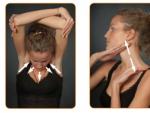
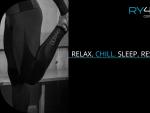
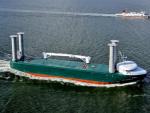
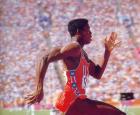 Fastest man in the world
Fastest man in the world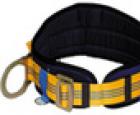 Descenders for industrial mountaineering Unicender - created by the Anglo-American company Morgan&Thompson
Descenders for industrial mountaineering Unicender - created by the Anglo-American company Morgan&Thompson Possibly the smallest horse in the world was born in the Leningrad region Gulliver sets a record
Possibly the smallest horse in the world was born in the Leningrad region Gulliver sets a record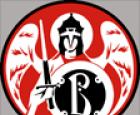 Boris Skripko: Bivol and Kovalev should easily win title fights Boxing commentator Boris Skripko biography
Boris Skripko: Bivol and Kovalev should easily win title fights Boxing commentator Boris Skripko biography